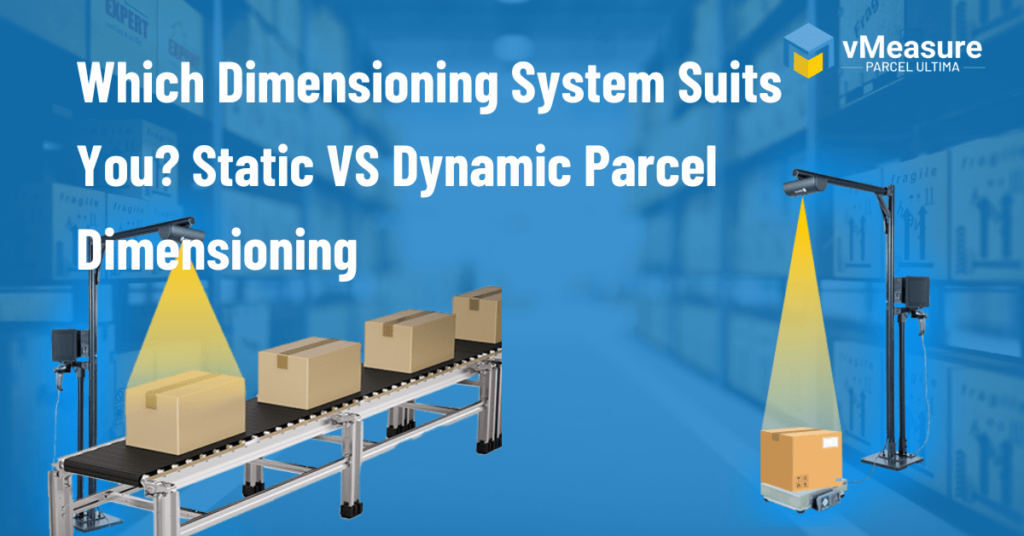Table of Contents
Summary
A key aspect of the warehouse is size. The boxes and bundles come in various sizes and styles. The current growth of the eCommerce sector has shown that the size and condition of the packages are more important in automated warehousing. This article gives you a clear idea of how important “size” is in the warehouse industry.
Introduction
Ecommerce is the trendy, increasingly popular term that is gaining traction worldwide. The new epidemic has demonstrated that making an online purchase is essentially simple; all we need to do now is handle applications with more transparency. A decade ago, warehouses were thought of as a central location to keep a variety of goods. However, most of the population has opted for online shopping because of how rapidly eCommerce has developed.
Implementing warehouse automation
The global warehouse industry is expected to double the number of competitors by 2025, as well as an increase in demand for products and technology. However, emerging technologies like automation and robotics present fresh challenges and unforeseen problems that must be resolved.
So, what is warehouse automation?
Automating various warehouse operations includes operating hardware, software, and individuals (laborers) to improve its effectiveness and precision. Increasing warehouse production, improving the warehouse’s competence, and reducing costs are some steps warehouse owners take to boost operational cycles. Such methods cannot be achieved solely through human effort. Most warehouse activities can be fully automated and completed quickly using robots and automation technologies.
Warehouse automation can be classified into process automation and physical automation.
Process automation is called business automation or digital transformation, a technology-empowered to perform several iterated tasks using the software.
Physical automation alludes to using robots and robot systems in the warehouse. The physical automation operations include anomaly detection using drone technology, driverless autonomous vehicles, and robots.
Warehouse automation: why is it necessary?
The metamorphosis of e-commerce is rising several times, and automating the warehouse has become a crucial part of the business supply chain. Therefore, the automation process is bought viably to the warehouses to bring down the reiterated manual cycles.
Impacts of warehouse automation
- Sales sway: There is a direct correlation between sales and customer satisfaction; it does not matter how the sales and marketing departments bring in new requests; a poor customer experience will result in a reduction in sales relationships with the organization; thereby, they are less likely to return. With the impact of the increased sales, demand forecasting accuracy rises reliably.
- Production sway: Enhancing profitability and customer service by bolstering any manufacturing application.
- Business sway: Maintains a quick payment cycle during tight shipping schedules, invoicing, and shipping charges while monitoring real-time transport visibility.
- Client support sway: Improve customer satisfaction by providing real-time product status, enhancing order fulfillment, and increasing customer retention.
Benefits of warehouse automation
An understanding of the warehouse’s benefits requires multiple overlays. You cannot deploy a solution without better insight and envisioning better outcomes in the fast-paced business environment. Below are the benefits of warehouse automation.
- Increased speed: We can develop and enhance the production and product retrieval process with enhanced speed. By improving operational speed, we can handle the inventory management and order fulfillment processes with ease.
- Better inventory management: Warehouse automation can help reduce human blunders, such as feeding incorrect or inaccurate data, recording irrelevant parcel counts, and many more. Reducing erroneous data results in better order fulfillment and no need for rechecking processes.
- Enhanced safety: The statistical study states that slips and falls in the warehouse account for around 25% of injury claims. The most important aspect of the warehouse is therefore emphasizing the safety measures, and with warehouse automation, there are no longer any concerns in the warehouses.
How can we optimize the warehouse for better operation?
The key to eCommerce success is an optimized warehouse. However, low efficiency slows down the production phase, affecting the estimated delivery framework, and resulting in poor customer experience.
Using best practices and technologies can help you optimize your warehouse more effectively
For optimizing warehouse operations, consider these best practices and technologies:
- Coordinating warehouse tides: A spotless workplace can make all the difference. Similarly, a disorganized workspace can directly affect productivity. For example, certain messy services include paying attention to the items, moving packages around the warehouse, maintaining inappropriate internal package insight, overstocking, etc. In addition, you cannot streamline any of your warehouse production operations without an organized warehouse.
- Invest in equipment that automates warehouse operations: choosing the appropriate technology depending on your industry is essential to set up a vertical. This state initially takes some time; we need better insights into determining request reports and information about the hardware we pick. However, with the right warehouse optimization, we can accelerate throughput, eradicate human errors, and provide precise stock reports.
- Warehouse storage optimization: As per the statistics, there is a monstrous lift in the online e-commerce vertical. Most sectors intend to enlarge their warehouses due to the surging necessities of products and customers. By stocking more enhanced products in-house, there is a shortage of ground space. These area concerns can viably lessen the travel period from aisle to aisle, advance warehouse safety, and ease equipment traffic.
- Minimizing touch points: lessening the hand-operated operations is the more reliable path for fruitful warehouse enhancement, meaning – warehouse automation can facilitate iterative manual functions such as sorting, packing, and shipping processes.
- Setting up fixed zones and locations: Setting up a designated operation spot is crucial in constructing a proficient warehouse. Setting up the fixed zone\location in the warehouse is framing a particular territory for each operational procedure, such as put away, picking, and replenishing the products.
- Reviewing inventory activities: Providing an inventory review activity will allow us to see how much profit we made during development. Periodic and perpetual inventory systems are two of the available options. A periodic inventory system depends periodically depending on the needs of the company. A perpetual inventory system, in contrast, depends on daily updates, but it is significantly more expensive because it needs more software.
How does size work in the world of automated dimensioning?
Size is a crucial concept in automated dimensioning. Most dimensioners are deployed in the market to calibrate the dimensions of parcels. In the traditional dimensioning method, the employee uses tape and a ruler to measure the packages, which may sometimes provide incorrect dimensional data, which later produces unnecessary shipping charges.
The automated dimensioning solution is deployed to ease out faulty dimensional data concerns. In another case, most warehouse sectors choose the automated dimensioning solution to enable production momentum, reduce shipping charges, and allow a better storage space in the warehouse.
This dimensioning solution comes in various sizes, like pallet and parcel dimensioners. Pallet dimensioners measure the dimensions of pallets and crates, while parcel dimensioners measure parcels of multiple shapes, including cubes, cuboids, and polybags.
Here are the reasons why automated dimensioners are deployed in the warehouses to perform parcel operations effectively:
- Speed and accuracy: As the eCommerce sector is growing monstrous, it becomes a paramount task to increase the warehouses’ productivity to deliver the products to the customer’s doorstep on time. The automated dimensioners can calculate the dimensions such as length, width, height, and breadth of the product in less than a second and with accurate dimensional data.
- Can capture a photograph of the product: The main aim of capturing the product’s picture is to check for any anomalies a step before the shipment phase. In addition, capturing an image can help acquire the data for future insight and generate more analysis, like developing a forecast demand report based on the number of purchases that happened with the same product during varied seasonal periods.
- Can integrate with other devices: Currently, most automated dimensioners are developed to multitask; this includes estimating the dimensions, and weight, which can be connected with a labeling device, barcode scanner, and printers to print the product invoice.
Conclusion
The concept of eCommerce and warehouse is getting the products in-house before showcasing them online. On that note, size plays an immense role in the warehouse vertical, from the market size to estimating a delivery timeframe depending on the parcel size to the customers’ doorstep. As eCommerce continues to expand, there is no doubt that the warehouse and logistics will stretch simultaneously. In this case, maintaining a special relationship with the employees and patrons would elevate the size of loyalty and satisfaction manifold.





